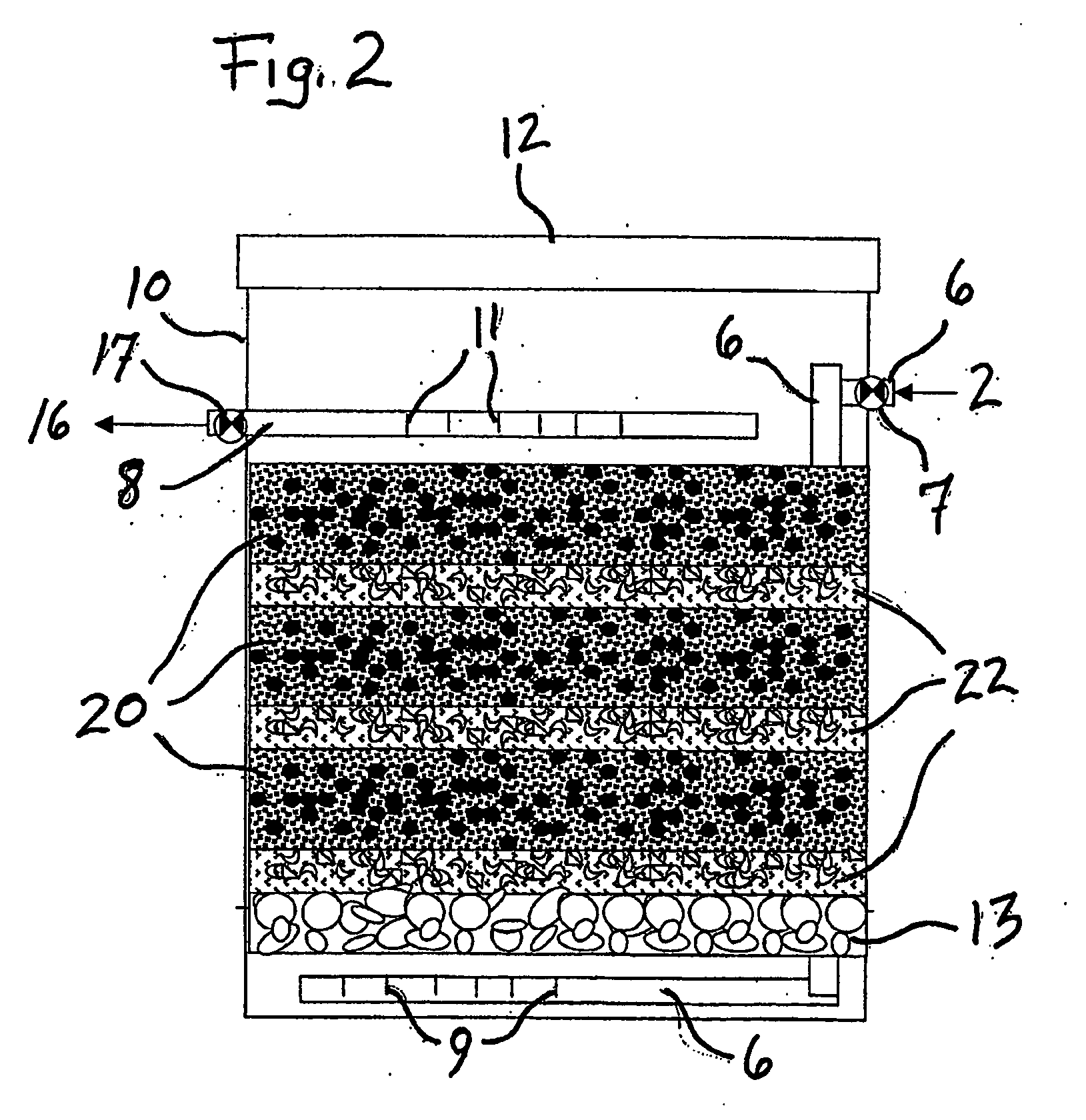Process for autotrophic perchlorate reduction using elemental sulfur and mollusk shells
a technology of elemental sulfur and mollusk shells, which is applied in the direction of biological water/sewage treatment, separation processes, filtration separation, etc., can solve the problems of inability to remove perchlorate, excessive nitrogen discharge from decentralized, sub-surface wastewater treatment systems, etc., and achieve the effects of reducing the loading of perchlorate in waste water, reducing perchlorate, and reducing perchlora
- Summary
- Abstract
- Description
- Claims
- Application Information
AI Technical Summary
Benefits of technology
Problems solved by technology
Method used
Image
Examples
Embodiment Construction
[0092] Preferred embodiments of the invention provide for, inter alia, a bioreactor unit, a novel treatment media, autotrophic bacteria seeded to the media, and related components to comprise a treatment system and operational method for reducing perchlorate in waste water. A preferred embodiment of the treatment media employs an electron donor, such as elemental sulfur, for example, and a buffering material having a high content calcium carbonate material such as mollusk shells or crushed coral material, for example. According to a further preferred embodiment, the media can be seeded by a sulfur-utilizing, perchlorate-reducing bacteria (SUPeRB), and / or by a perchlorate-reducing bacteria that is within the phylum Proteobacteria, and / or by at least one member of the genera Dechloromonas (β-proteobacteria) or Dechlorospirillium (α-proteobacteria).
[0093] The invention provides for a wastewater treatment system, comprising a bioreactor unit, perchlorate reducing media and additional c...
PUM
| Property | Measurement | Unit |
|---|---|---|
| Length | aaaaa | aaaaa |
| Length | aaaaa | aaaaa |
| Length | aaaaa | aaaaa |
Abstract
Description
Claims
Application Information
 Login to View More
Login to View More - R&D
- Intellectual Property
- Life Sciences
- Materials
- Tech Scout
- Unparalleled Data Quality
- Higher Quality Content
- 60% Fewer Hallucinations
Browse by: Latest US Patents, China's latest patents, Technical Efficacy Thesaurus, Application Domain, Technology Topic, Popular Technical Reports.
© 2025 PatSnap. All rights reserved.Legal|Privacy policy|Modern Slavery Act Transparency Statement|Sitemap|About US| Contact US: help@patsnap.com



